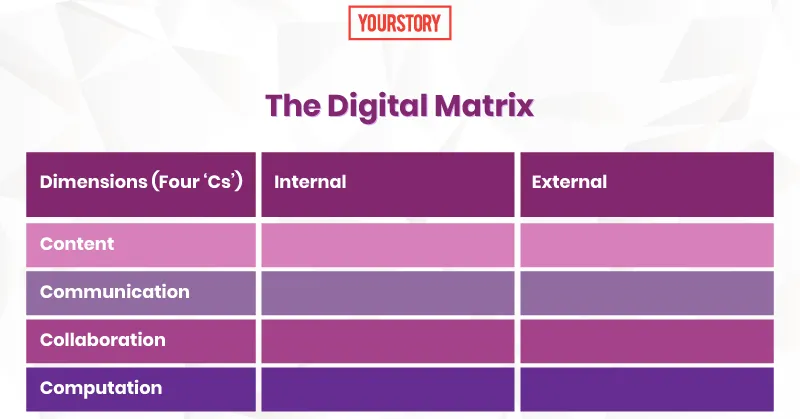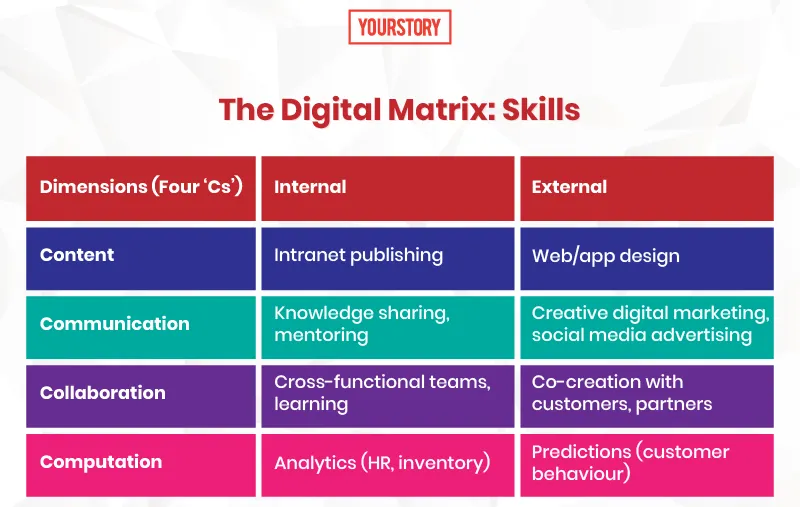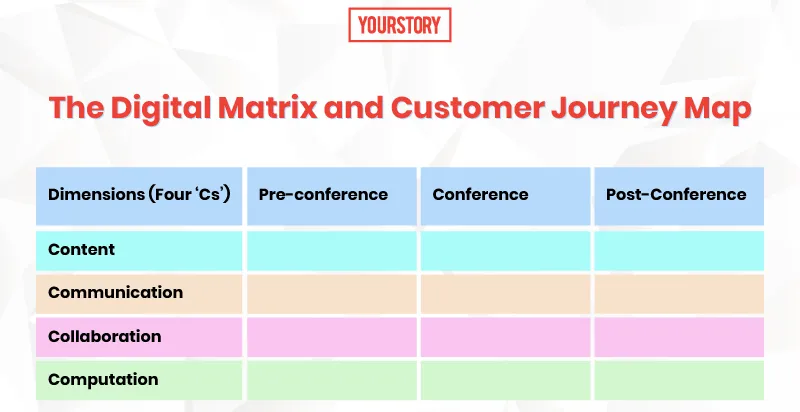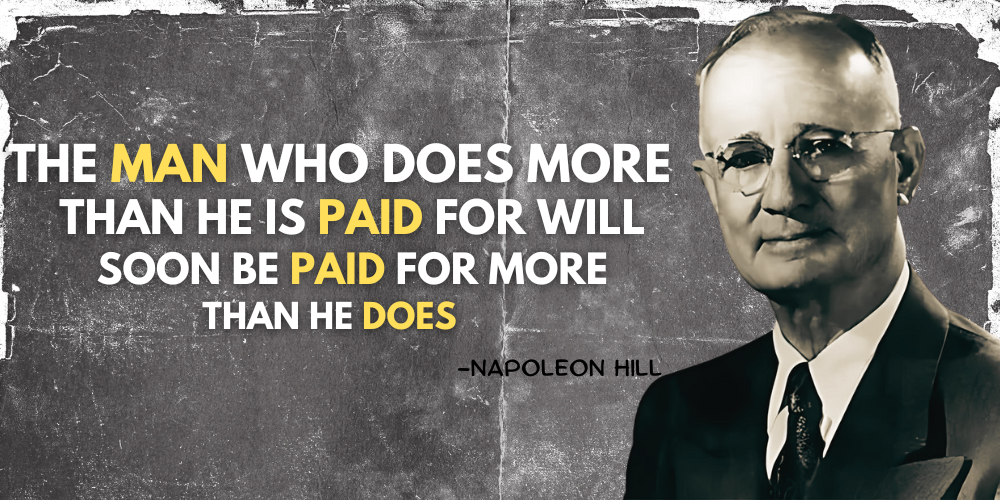The Digital Matrix: How to map digital capabilities and improve virtual collaboration
In this series of articles, we present ways of mapping the world of digital tools and successfully harnessing them for organisational activities.
The pandemic era has truly accelerated the forces of digital transformation. But what exactly does digital mean? Right from the mainframe era and even earlier, various forms of ICTs have been around for many decades. But they are much more ubiquitous and powerful now, as seen in the rise of social media, smartphones, sensors and AI.
There are many kinds of business tools and applications in use today, which call for a range of skills depending on the tasks they are used for. So here’s a visualisation and planning tool that I would call the Digital Matrix, to help you map the digital world. This can be used for internal activities in your organisation as well as external engagement with customers and partners.
The table is based on a classification of the four families (‘Four Cs’) of digital tools: content, communication, collaboration and computation. This builds on a framework in my earlier book, Knowledge Management Tools and Techniques.

You can fill up this table of the ‘Four Cs’ as a first step to mapping out activities, skills, workflows, projects, and budgets. These can be in separate tables, or in an integrated spreadsheet. While large firms already have such layered tools for planning, this table will be particularly useful for organisations just beginning their digital journeys.
Processes and tools
For example, several activities and processes of an organisation can be mapped onto the above table. Information services can be showcased internally (Intranet) or externally (World Wide Web). Tools like Yammer can be used for internal messaging, while Telegram and Zoom are often used for customer communication.

Corporate portals and new-age platforms (e.g. Asana, Slack) help workflow coordination and collaboration, while Google Docs are a simple way for organisations and communities to collaborate and create new assets.
Artificial intelligence and machine learning can be used internally (e.g. HR analytics) or externally (e.g. customer behaviour prediction). Organisations can also collaborate to create open-source tools and code libraries.
Skills and capabilities
To execute the above processes and use the specified tools, companies also need to map out current and desired skillsets, along with budgets and training programmes. For example, external-facing skills for SMEs starting their digital journeys can include search engine optimisation and digital marketing.
Companies scaling up their knowledge management initiatives need to train and incentivise employees for explicit knowledge sharing, particularly during conditions of Work From Home (WFH). Data scientists will be needed to harness digital flows for HR and inventory analytics (internal activities) as well as predictive analytics (e.g. customer behaviour).

Several organisations around the world have identified key skills for success in the Year 2021 and beyond. For example, among the top 10 future skills identified by the World Economic Forum (WEF), five of them relate directly to the table above: active learning, creativity, social influence, technology use, and technology design.
Virtual conferencing and events
The pandemic era (and the post-pandemic phase) has highlighted the need for effective experiences in video-conferencing and virtual events. Unfortunately, phenomena like ‘fatigue’ (no offence intended to Zoom) are setting in, partly due to poor planning of pre- and post-conference activities.
In such a case, it will be useful to blend the above Digital Matrix with tools like the Customer Journey Map (used in creative problem-solving approaches like Design Thinking) - see the table below, which you can use to map out the activities in each phase. Effective planning and expert facilitation can transform online collaborative and conferencing activities into a win-win situation for all participants.

Though it is hard to replicate the energy of ‘physical’ events and serendipitous encounters online, digital tools can help collaboration in several ways. Proper planning can help reduce ‘webinar fatigue’, via blending interactive group breakouts with content capture in documents for post-event use.
As seen in conferences like TechSparks, CII Global Virtual Knowledge Summit, Bangalore K-Community, and Russia’s GLINK community events, post-conference content publishing in multiple media formats can sustain the learnings of an event long after it is over.
This can include articles, checklists, video bytes, quotable quotes, mindmaps, and canvases. This can be even more effective when conference attendees themselves co-create relevant content during the event, eg. in Google Docs during Zoom breakout sessions.
Such co-creation also leads to a sense of ownership among attendees, and can increase knowledge retention. If well-designed, the process of co-creation itself can be as enjoyable as the final output.
More advanced collaboration tools also yield a wealth of analytics and ML-driven features. For example, some platforms give you a machine-generated transcript of the virtual conference sessions. Though not fully accurate, they give a good sense of the key points raised, and can be edited into more granular articles. Attendee analytics also gives insights into which sessions were particularly engaging, and what can be done to make co-creation more participatory.
In sum, having a clear visualisation of the digital world, blending it with existing workflow and journey maps, and combining different kinds of communication techniques can give leaders an actionable map for implementing digital transformation. This can also be useful for managers and employees to map out their own skillsets and career advancement paths.













